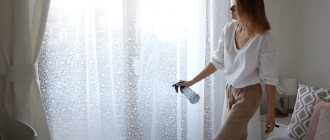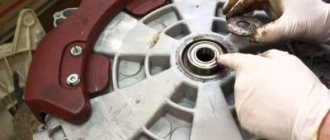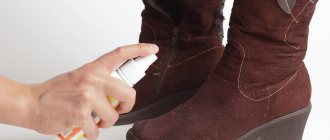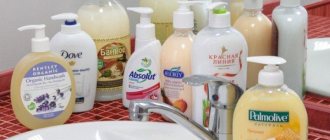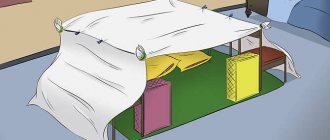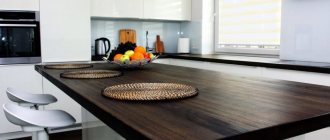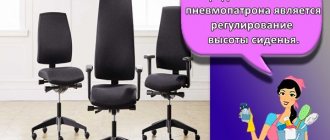Frequency of cleaning the aquarium
It is impossible to give an unambiguous question about the frequency of cleaning. If you compare large and small aquariums, you often have to clean in smaller containers. Again, it's worth considering the population. If there is a high population density in a large container, and only 3 fish swim in a small one, then cleaning will be done more often in larger containers. From here we can only talk about averaged data:
- Every day you should feed the fish and inspect the equipment and check the temperature.
- Planned cleaning to change water should be carried out once every 7-14 days.
- Clean glass once a week, even if they seem clean.
- Filter maintenance once a month.
- Cleaning the soil, decorations, stones once every 7 days.
- Regularly test water for nitrates, ammonia, phosphorus, and trim vegetation.
Replenish evaporation fluid every 3-4 days.
Cleaning equipment
Every aquarist has a tool that they use for cleaning. Conventionally, it is divided into a standard and individually specific set.
The first includes the necessary things: sponges, buckets, scrapers, hoses, siphons.
The second set includes additional tools: tweezers, acidity indicator, feeders, aquarium tests.
Water
You can't just draw liquid from the tap. It must meet certain parameters at which the fish will feel comfortable.
The indicator is used to check the pH acidity, the norm is considered to be 7. Soda is used to increase it, and peat is used to decrease it.
The smell of chlorine is eliminated. The water is left to stand for 3 days. If this does not help, use a dechlorinating agent.
For freshwater fish, it is not advisable to use distilled liquid, as it is considered “dead” water.
The upper layers of water from old aquariums are recommended; they have an established biological balance.
Glass scraper
To avoid putting your hand in while cleaning the glass inside the aquarium, it is convenient to use magnetic scrapers.
Algae deposits can be cleaned with a scraper that has a metal blade. You just have to be extremely careful not to snag the silicone sealant (wall connector) or scratch the acrylic.
If you wash your glass regularly, at least once every 7 days, an ordinary kitchen sponge will do. You just need to use a new copy, without any leftover food or fat.
Big bucket
When cleaning sand, pebbles, water and debris are drained. Therefore, you need to have a large bucket for collection.
You will also need a large bucket to settle the water. It is advisable to choose a neutral material - inert plastic, enamel. All other materials: zinc, aluminum, copper exclude. The reaction of elements produces harmful substances that cause imbalance and death of aquatic organisms.
Water pump
Among the tools there should be a pump. You can use a siphon-type pumping device.
Gaseous constituents of water
This type of substance evaporates through the surface of the water. Here we can consider the quantitative and qualitative compositions of dissolved gases in water. Gaseous substances in natural water enter into chemical reactions with other dissolved elements, thanks to diffusion they constantly circulate through the water mirror and are harmless and harmless to fish.
You can find out the water disinfection method for your area at your local water utility; this information will not be superfluous. At new water treatment stations, purification with ozone and ultraviolet light is used, and such water can be added without fear (it is pointless to protect it from oxygen and photons).
The outdated method of cleaning with chlorine is gradually becoming a thing of the past, but is still used. Chlorine and its derivatives are poisons. They allow you to destroy both harmful and beneficial bacteria, and depending on the concentration of large animals and even people.
Method for removing chlorine gas from water
Everyone knows the unpleasant smell of chlorine coming from freshly poured water. Water, while in a cup, ceases to smell after a while, which means that the chlorine molecules have evaporated.
If fish are placed in freshly collected chlorinated water, they will die from burns to the body and gill filaments.
After making some observations during settling, you can see that chlorine evaporates quite quickly. There is no need to let tap water sit for more than a day, since residual chlorine cannot affect the well-being of the fish.
An important point is the choice of dishes. The larger the area of contact between water and the environment, the faster gas exchange occurs, and the chlorine disappears. It follows from this that when water settles in a large-diameter basin, it will become suitable for an aquarium much faster than when using a plastic bottle.
You cannot cover the container you are using with a lid, much less screw on the bottle, since there will be nowhere for gas impurities to evaporate, and the water that was chlorinated will remain so.
Ozone and its effect on fish
With ozone, things are a little different. It does not have a pronounced odor, although it carries freshness. Under natural conditions, we feel it during a thunderstorm, during the operation of air conditioners (ozonizing) and laser printers. Before water is supplied to the drinking pipeline, the process of ozonation occurs; ozone molecules are unstable and quickly transform into a stable compound - oxygen. Well, oxygen is not dangerous for fish.
Rules for surface cleaning of an aquarium
When carrying out routine or superficial cleaning of the aquarium, adhere to some rules and procedures:
- disconnect electrical appliances from the network. Leave external filters;
- clean plaque from glass with a scraper or sponge;
- If the decorations are covered with plaque, take them out and rinse with hot water. Use any detergent, but rinse thoroughly;
- trim living plants, do weeding;
- siphon the soil as necessary;
- drain the water (if you are cleaning the bottom, this will be done automatically);
- rinse the filter as necessary;
- fill with clean water.
After the water has settled, brush over the decorations and shake off the residue.
Rules for deep cleaning of an aquarium
Deep cleaning involves completely restarting the aquarium. Such actions are caused by the death of fish, plant disease, the structure has leaked, or the design is boring.
The algorithm of work is the same as during scheduled cleaning. The only differences are total disinfection.
Prepare a house for the fish. If aquarium water is suitable, dial. During an epidemic, this should not be done; prepare settled water for several days and heat it before settling.
Take out the plants. It is important not to damage the root system. If disease occurs, plant new samples. If they are dear to you, treat them with penicillin. Combine 10 liters of water, 50 mg of the drug. The course of treatment is seven days. Maintain the temperature at 25 degrees.
Then, pull out the soil. Perform heat treatment.
Prepare a salty solution for decoration.
Leave 50% of the water from the aquarium for a quick restart, if the cause is not an infection, a virus.
Start cleaning the aquarium.
Use disinfectants.
For mycobacteriosis, fill the container with washing powder at the rate of 400 g of mixture per 60 liters of water. The inventory is all boiling.
Dry the aquarium for several days, at least a day.
Fill with water to check for leaks, leave for 2 hours, if everything is fine, drain the liquid, start restarting.
Carry out the steps in reverse order.
Cleaning the walls
Before removing the walls of the aquarium, arm yourself with the necessary scraper. Avoid using used kitchen sponges.
Proceed carefully, near the bottom. Sand rising from the bottom will scratch the glass.
Do not remove algae washed off the walls. The fish will eat some of it; you will remove the rest when changing the liquid.
Algae processing
Treat algae with special preparations, for example, Easy Clean, Algaecide or Sidex.
Easy Clean – pour the product into the aquarium. It is relevant without living vegetation.
Algaecide or sidex – kills algae and stimulates plant growth. For 50 liters of liquid, add 2 mg of the drug.
Treat the affected surfaces with a syringe. Dead algae will be eaten by algae eaters.
Cleaning gravel
The soil is covered with excrement and food debris. Use a siphon or hose to stir the surface; the impurities will rise up the tube.
When deep cleaning, the gravel is pulled out and washed with detergent.
Cleaning decorative elements
Artificial plants and decorative elements are washed inside and outside the aquarium. In the first option, clean off deposits with a brush. If this does not help, remove the decorations and process them in the following ways:
- add boiling water and lower the decorative elements, hold for 10-15 minutes. High temperature will help get rid of algae;
- bleach. Combine water and bleach in a ratio of 9:1. Lower the decorations, hold for 10 minutes. Wash thoroughly under running water. Not all elements can be cleaned in this way, for example, artificial driftwood, corals;
- iodized salt + lemon. Prepare a paste of two ingredients. Apply the mixture with a toothbrush. The method is suitable for silk decorations.
What are pH and hardness?
pH is the pH value of an acidic environment. A pH of 7 is considered neutral, as it is more favorable for most aquarium inhabitants. When it is less than 7, the water is alkaline. In order to easily determine the pH of water, you need to purchase litmus papers with a color chart, or specialized aquarium tests.
The second parameter of water is hardness. It is divided into temporary and permanent. Water hardness can also affect aquarium inhabitants. To avoid unpleasant consequences, aquarium water should also be checked for permanent and temporary hardness. It is measured in degrees and calculated by adding temporary and permanent hardness.
In cases where spawning of a certain type of fish is necessary, for example, such as neons, whose eggs can only survive in very soft water, water with a low hardness content is used. However, for most varieties of aquarium fish, water with a hardness content of less than 5 is not suitable for life and reproduction. At the same time, too high water hardness, such as 25 degrees and above, is also detrimental to most aquarium species. Of course, there are exceptions.
The norm is considered to be a hardness of 5 to 25 degrees, which is favorable for the vast majority of different types of aquarium fish.
Aquarists who don't want to bother with different measurements can simply select certain species of fish that thrive in regular tap water.
INVENTORY REQUIRED FOR AQUARIUM.
AERATION IN THE AQUARIUM AND EVERYTHING YOU NEED TO KNOW ABOUT IT.
SPRAYER FOR AQUARIUM AND EVERYTHING YOU NEED TO KNOW ABOUT IT.
How to clean an aquarium with a siphon
The components of a siphon are a pump and a tube. One part is lowered into the aquarium. By pumping it up, they suck out the dirt. To do this, place a tip on the tube, shake the soil, and remove the waste.
Bottom
Lower the end of the siphon with a special nozzle deep into the aquarium and slightly lift the soil. By pressing the pump, debris from the bottom will flow out through the tube, and the remaining soil will sink. Do not touch areas with plants so as not to disturb the root system.
Sand
Otherwise, the sand is cleaned. A hose is used here. Lower one end to the sand, the other end into the bucket. When collecting increment from the surface, sand gets in. After cleaning, rinse it under running water and return it to the aquarium.
Priming
Living plants do not grow without a substrate. Therefore, the bottom is covered with a layer of soil. The next layer is sand or pebbles. The soil is cleaned during general cleaning. The substrate is heat treated or changed.
If the plants are decorative, the soil means sand, quartz, pebbles. Clean once a week with a hose or siphon.
Required Tools
For the most convenient and effective cleaning, every aquarist is recommended to have the following tools:
- Scraper. Designed to remove algae and mud from the walls of the aquarium. It is usually made of metals and is well suited to work with a glass pond. But when cleaning, you need to be careful not to leave scratches on the surface or damage the sealant layer that is responsible for the safety of the aquarium. But in stores you can also find softer options - acrylic scrapers, or more modern ones - magnetic scrapers, which are controlled from the outside of the aquarium.
- Container for draining water (bucket or basin).
- Pump or siphon.
- Cleaning products with safe composition.
- Sharp blades used to remove stubborn dirt.
- Scraper with a foam attachment on a long handle.
- A net for catching fish. If several species of fish live in a reservoir, it is recommended to select 2-3 nets, suitable in size for each individual.
- Ladle.
- Long tweezers.
- Sponge.
- Paper towels and rags.
Features of using aquarium salt
Sea salt, unsuitable for food, has found use in aquariums. Problems related to fish health can be solved with salt:
- used in stressful situations.
- during transportation;
- the effect of salt affects osmoregulation.
Salt changes the quality of water.
How to care for salt water aquariums
To prepare sea water, distilled or double purified liquid is used. Simply standing up will not be enough.
Care:
- measure parameters every day;
- using pumps to simulate flow;
- partially change the water weekly;
- Clean the walls once a week;
- monitor equipment;
- regularly test water quality;
- Clean weekly from food debris and excrement.
Works globally are no different from a freshwater aquarium.
Pollution prevention
In order to avoid rapid contamination of the aquarium and frequent forced cleanings, it is necessary to carry out preventive measures, which include the following:
- Avoid direct exposure to sunlight. To do this, the tank must initially be positioned correctly. Under no circumstances should you install it directly under the window (there should be at least 1 m of indentation).
- Give preference to artificial lighting using special lamps on the lid.
- Correctly pour the bottom filler - it is better to place it near the front wall, this will facilitate the process of regular cleaning.
- Do not overfeed the fish. An excess of feed leads to rapid turbidity of the water. Portions of food should be such that the inhabitants of the artificial reservoir eat them in no more than five minutes.
- Trim aquatic plants in a timely manner and remove dead and fallen leaves.
- Make sure that natural cleaners live in the aquarium - swordtail, guppies, platies, Ancistrus catfish, snails. These individuals have a mouth designed in such a way that it resembles a natural scraper, and their food is lower aquatic plants, even blackbeard and Vietnamese.
Getting rid of pests and excess organic matter, restoring the biobalance of the aquarium
Beneficial microelements and harmful algae develop in the vessel. Biobalance is required. In case of deviation, various methods are used:
- launching cleaners (snails, shrimps, fish);
- mechanical cleaning;
- reducing daylight hours to 8 hours;
- adjusting the number of fish;
- vessel restart;
- artificial and living Sera filters;
- purchased preparations to combat algae.
Before using any method, identify the cause of the imbalance in biobalance.
Biological organisms that clean aquariums
Toxic products (excrement, leftover food, plant waste) are neutralized and broken down by beneficial bacteria into a form suitable for plant nutrition.
Bacterial waste products are absorbed by filters or removed by water changes.
Plants purify water, absorb carbon dioxide, and release oxygen. Floating plants are considered the most active.
Among biological organisms, mollusks stand out. They convert calcium into an insoluble state, bring food residues to the desired consistency, and bacteria can easily process them in the future.
Amoebas prefer to feed on algae and organic debris. This gives food to bacteria.
The appearance of bryozoans in the vessel indicates a successful balance. Since they live only in clean water with a sufficient dose of oxygen.
All flora and fauna participate in the biological balance of the aquarium, but their importance is unequal.
Snails
Active algae fighters among snails:
- Helena;
- Corbicula java;
- Zebra;
- Black ear;
- Hedgehog;
- Porcelain septaria.
The temperature is in the range of 22-27 degrees.
Snails do not reproduce in a vessel, except for the “black ear” species. Caviar can be seen on the walls of the glass.
The horned snail Neritina Gliton lives among the fish for up to 5 years. The uniqueness of the species is its miniature size of 1-1.5 cm.
Fish
Cleaner fish benefit freshwater aquariums by:
- Siamese algae eaters;
- otocinclus;
- Ancistrus.
The main food of fish is algae. Content temperature is 23-26 degrees.
Shrimps
Shrimp are popular among aquarists:
- Amano;
- Crystal;
- Cherry;
- Black Tiger.
Shrimp destroy algae and rotting plant leaves.
